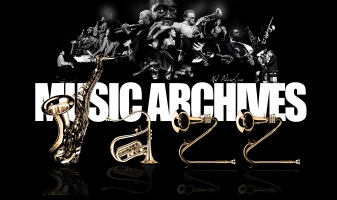|
“His saxophone sings
ebulliently, seeing him summoning breathtaking woodwind tones from
the instrument which float gloriously over the rest of the ensemble“
– Jazz Da Gama
SWINGING
SUNSET,
the newest CD by sax player and composer ANTHONY E. NELSON Jr.,
is an homage to the great jazz organ trios that were particularly
popular in clubs in the 1950s and 60s.
This
is Nelson’s 5th CD as a leader and follows Testament-Live
at Cecil's (2010), Tenor for Two (2011), Live at Twins
Jazz (2013), and Swift To Hear, Slow To Speak (2016). Jazz
Music Archives says, “A saxophonist, flautist, clarinetist and
bass clarinetist, Nelson is blessed with an inherent talent that is
boundless in its ability to reach across generational and genre
lines.”
Nelson
is joined on SWINGING SUNSET by two veterans, drummer CECIL
BROOKS III (Marvin Peterson, Andrew Hill, Arthur Blythe, Russell
Gunn, Etta Jones, Jimmy Ponder) and B3 organist KYLE KOEHLER (Craig
Handy, Don Braden, Conrad Herwig, Vince Ector, Jerry Weldon).
Organ
trios are rooted in African American culture. With its soulful,
emotive sound, organs were popular in black churches, where they were
played by jazz musicians like Fats Waller and Charles Keynard in the
1920s and 30s. By the 1950s, the organ had emerged from the churches
to find popularity in bars and clubs in trio settings in the
inner-city neighborhoods after Jimmy Smith began to play bebop on the
Hammond B3. Musicians liked the organ trio setting because it was
intimate and allowed them to stretch out. But club owners embraced
it, too, because it was cheaper to pay a trio than a larger band
while still filling their clubs with the big B3 sound.
Nelson
grew up around Newark, N.J., and spent a lot of time in jazz clubs
like the iconic Peppermint Lounge in Orange, N.J., where he listened
to some of the best jazz and R&B musicians in the 1990s. It was
where he heard Jimmy McGriff and became captivated with the organ as
a jazz instrument. Nelson’s own music is imbued with the sounds of
classic jazz, soul, and funk. The church has played a major role in
his life, and his spirituality is reflected in each of his CDs. He
plays with the joy and fervor of a Baptist church service.
SWINGING
SUNSET
came about by happenstance. Brooks, who mentored Nelson when he was
in high school, moved to the West Coast but came back east for some
gigs in New York and New Jersey. Brooks thought it would be a good
idea while he was in town to record with Nelson, so they went into
the studio with B3 master Kyle Koehler, a NYC-based first-call
player, and laid down some tracks. Most of the tracks on the album
were recorded in just one take, giving the music the feel of a live
recording.
Nelson
relates, “This is an album I needed to do even though I didn’t know I
needed to do it. The organ was a big part of my church upbringing and
a big part of the music education I received in the clubs in Harlem
and New Jersey. I have also played on numerous organ trio gigs. For
this album, I wanted to honor the cats who knew how to do an organ
trio right. But I also wanted to pay homage to the great sax players
that shaped my understanding of the music. I have great love for
artists like Gene Ammons, Houston Person, Stanley Turrentine, and
other sax giants without whom I wouldn’t be the musician I am today.”
Nelson
opens the album with “Canadian Sunset,” which he first heard on
Ammons’ 1960 album, Boss Tenor. Played as a medium swing, the
tune, as Nelson says, just feels good. In fact, the band had such a
good time playing it, they forgot they were recording. Nelson
relates, “We were in the moment. It was like being in church and
everyone is singing and clapping, and the preacher wants to move on
with the service, but no one is paying attention to him because
they’re so wrapped up in the feeling of the music. The song went on a
little longer than we intended, so we turned the outro of the tune
into its own standalone piece and called it ‘One More Once.’”
Neal
Hefti’s “Girl Talk” has been recorded by dozens of artists, including
Ralph Moore, one of Nelson’s favorites. Although the band had some
idea of what songs they were going to play for the recording, they
just called “Girl Talk” and laid down the track in a single take.
Nelson wrote “Uno Mas Por Roberto” for his uncle Bob, who speaks fluent
Spanish. The song has a soul/Bossa vibe. In honor of Johnny Griffin,
another of Nelson’s favorites, the band plays a lovely version of
“These Foolish Things,” which Griffin recorded in 1956 on Introducing
Johnny Griffin.
Nelson
follows with Stanley Turrentine’s hip “Minor Chant,” which Jimmy
Smith recorded on his album Back to the Chicken Shack.
“Mildew” was written by Johnny Griffin. Nelson says, “I love Johnny
because he plays pretty no matter how much fire he brings to a song.”
Nelson recorded “Why Did I Choose You” because he was so taken by
Marvin Gaye’s version on his album, Vulnerable. “My goal,”
says Nelson, “was to capture the poetry of the lyrics.”
“On
a Misty Night” was a staple at the Peppermint Lounge jam sessions. He
had heard and played the song so many times, he learned it on the
bandstand and never saw the sheet music. Nelson includes “Three
Little Words” because he had heard so many versions of it by Sonny
Rollins. Nelson, though, undeniably puts his own spin on this old
chestnut. “Walk with Me” is a gospel standard. Nelson had his
godmother in mind while playing this bluesy, soulful number. Nelson
ends the album with his composition “Last Call (for Gryce),” written
in honor of saxophonist Tommy Gryce. A blues, Nelson usually ends his
live performances with this tune.
Anthony
Nelson’s sax playing is lyrical, with a full, warm sound. Although he
can blow hard, he approaches a tune like a singer approaches a song
lyric. His aim is to capture the emotional and spiritual content of a
tune, and he does not sacrifice the groove for mere complexity. With
the sensitive accompaniment from Koehler and Brooks, SWINGING
SUNSET is a moving tribute to the sax players and organ trios
who have nourished his soul.
# # #
SWINGING
SUNSET is
set for release on June 9, 2023 on Musicstand Records and will be
available everywhere.
Online:
Anthonynelsonjazz.com
Facebook.com/anthony.e.nelson.jr
@Anthonyenelsonjr
|






 Post Options
Post Options
 Thanks(0)
Thanks(0)
 Quote
Quote  Reply
Reply
 Topic: "Swinging Sunset" by Saxophonist Anthony E. Nelson
Topic: "Swinging Sunset" by Saxophonist Anthony E. Nelson

